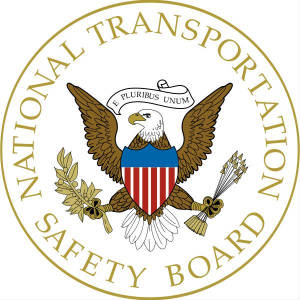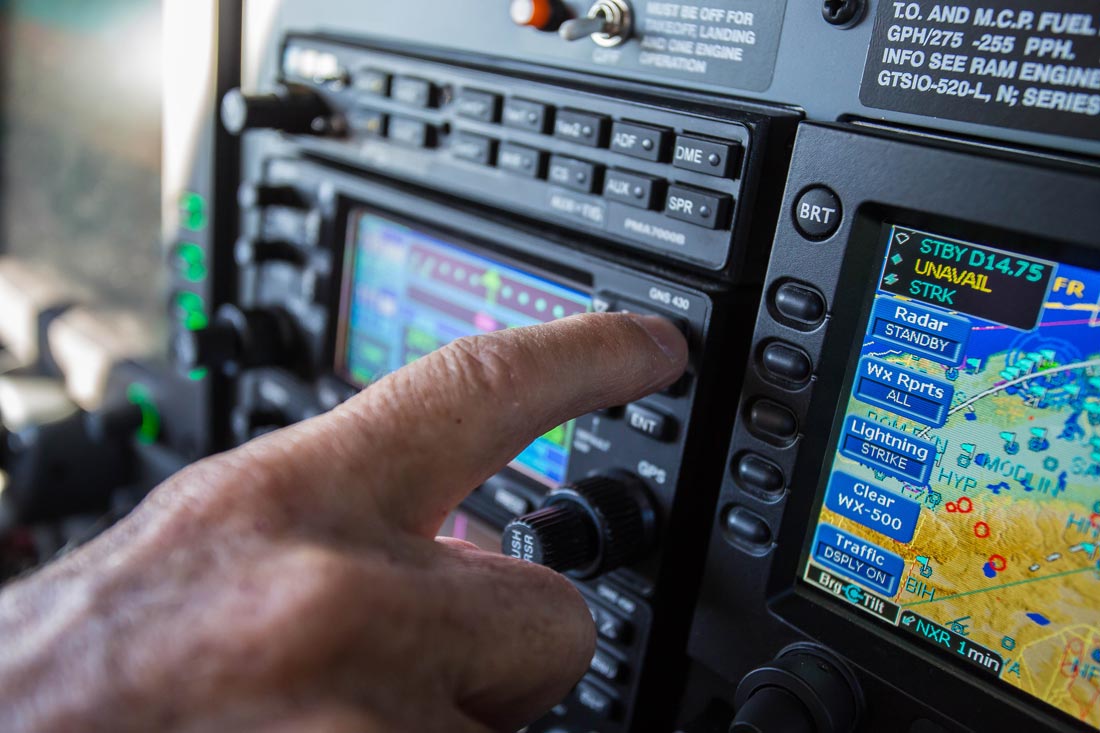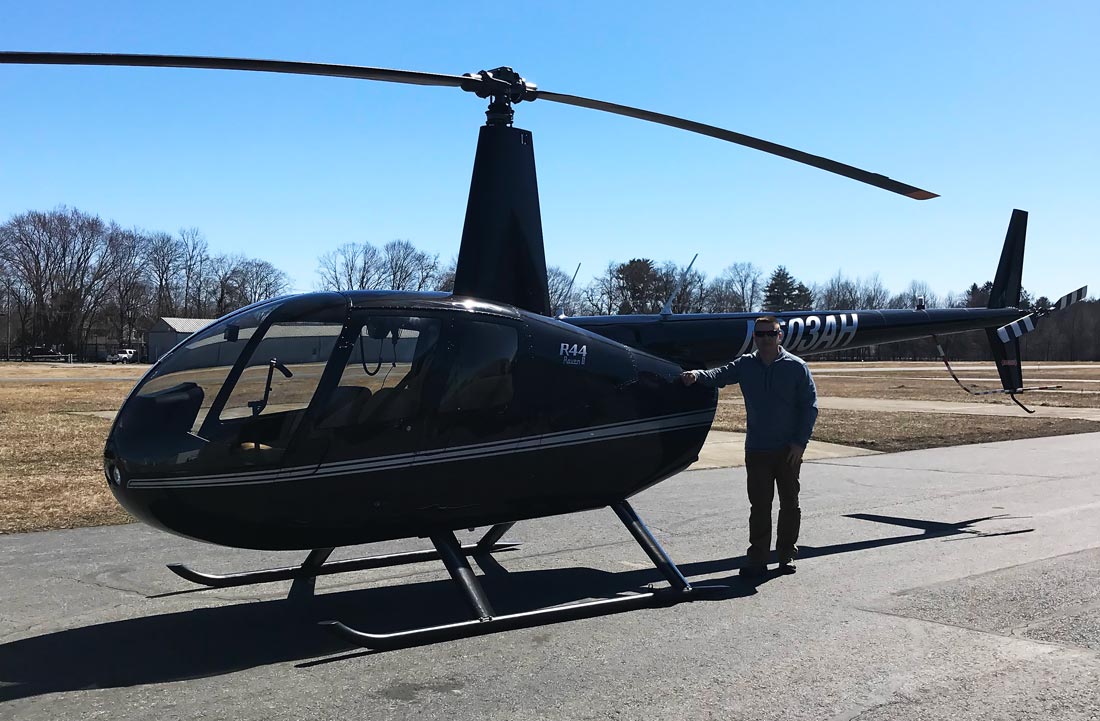Recurrent Training Reduces Risk
Noah Timmins
Recurrent training, or recurrent flight training, as a term, is thrown around a lot in the aviation community. Most pilots will recognize this term as meaning that there exists some menial task they must accomplish merely because the FAA mandates it so. Like a dollop of castor oil, “recurrent training” leaves a sick taste in pilots’ mouths, even though they know – deep down inside – that it is a beneficial process.
Think of it like this: at Christmastime, your daughter unwraps a brand new bicycle, sans training wheels. Although she exhibits eagerness to take a ride on her new vehicle, you (as the parent) decide to take it upon yourself to “show her how it’s done.” Outside, you gracefully mount the vehicle, push off, and pirouette face first into the ground when you lose your balance. This time, only your pride was hurt. Not riding a bicycle for years will have that effect: although the operator has done the procedure countless times before and mastered it, the skill with which it can be utilized now is lacking.
The FAA knows this. And they also know that instead of merely a child’s bicycle or a carload of groceries, pilots are carrying millions of dollars of freight, countless souls, tons of hazardous materials, munitions, and a whole plethora of odds and ends that really need to land safely. Systems exist to prevent accidents from happening, but they only work when they work. When an accident does happen, pilot and crewmember training needs to take over. A large part of successfully handling an accident comes from recurrent flight training.

Commonly, pilots will encounter recurrent training in a roundabout way. The FAA does not explicitly describe the IFR currency requirements as “recurrent training”, but they are. In short, a pilot cannot be in command of a vessel knowingly flying into IFR conditions without having done six instrument approaches, holding patterns, and navigation beacon interceptions within the preceding six months. Effectively, the FAA claims here that no pilot can truly be safe unless attempts were made under simulated instrument conditions. Ride a little bit with training wheels until balance returns.
Imagine renting a Cessna 210 for a short hop to the next state over. A weather system moves in, but – as pilot in command – you decide to call the flight an IFR flight. The aircraft is equipped for IFR flight, you’re an IFR pilot, so why not? You take off into the goo, fly in the goo, and come to land in the goo. Although you distinctly remember exactly how to fly the glideslope, hit the PAPIs, and pop onto the ground 1000 feet down the runway to applause, you don’t remember how it feels. Concentrated on your ILS, you fail to sweep, fail to notice your airspeed declining. You spot it, attempt to correct by increasing throttle, look out the window absent-mindedly, and get hit with vertigo from the motion of the clouds. At this point, you’re off the glideslope, on track to overshoot the airport, sick, and not communicating your intentions to anybody in the air or on the field.
The FAA and Recurrent Flight Training Requirements
With recurrent flight training, a pilot in that situation would have either flown six or more of those landings in those conditions recently or practiced them in simulated conditions. With the landings so fresh in mind, the sweep would be quick and crisp, the eyes would stay in the cabin, and the pilot would not just know how to land the plane, but feel it as well. Piloting a plane onto the ground in conditions where the ground is invisible is a nasty piece of work. Attempting to do is safely requires a lot from a pilot. The stress can mount and become too much for some. Because of this, the FAA has mandated recurrent training for this procedure.
Different kind of airmen and women have different recurrent training requirements. Part 121 Air Carriers have extensive recurrent training requirements, on both pilots and crewmembers. §121.433 requires annual retraining of flight dispatchers, flight crewmembers, and six-month pilot currency checks, on both flight procedures and airframe-specific procedures. Part 125 Commercial Carriers has a section, §125.289, that actually requires recurrent training on the briefing given to passengers by crewmembers before taxiing the aircraft, explicitly telling the flight attendants that they must know where the emergency exits are, know how the seatbelts work, know how the cabin equipment works, etcetera.
Part 135 Commuter Carriers are required mostly the same, excepting pilots must only be trained on an annual basis. Part 91, subpart K, has a section on Fractional Ownership of Aircraft, telling owners that they must have a recurrent training system for all pilots and crewmembers involved in the operation and servicing of that aircraft. Fractional ownership is a common theme among the aviation community, and the FAA must have deemed the multi-party ownership structure to be higher risk than single-owner.
There are additional recurrent flight training requirements for non-flight crewmembers. Part 65 mandates that mechanics may not exercise their privileges of “returning to service” any aircraft after maintenance unless they have six months of experience in the preceding eighteen months. Inspectors must meet 24-month requirements of either performing so many annual inspections, taking a test, or having another inspector supervise them. Air traffic controllers must have three months of experience, within the past six months, to exercise their privileges. Parachute riggers must have ninety days of rigging experience within the past year.
There is an additional step of “recurrent training” that is not training at all. Parts 61, 63, and 65 all require recurrent medical examinations for persons involved in the business of flying airplanes. Although some of the requirements here are stricter than necessary, they exist to minimize risk and enhance safety. A FedEx Boeing 727 impacted terrain during a clear day in perfect weather outside Tallahassee on July 26, 2002. The NTSB found the cause to be the pilot in command’s inability to properly distinguish the red and white on the PAPI and approaching too low. Medical records showed a history of color identification issues, for which he was given an FAA waiver. This particular pilot had an issue which – although not too major in the Administrator’s eyes – just happened to make this particular situation unacceptably risky, resulting in the total destruction of an aircraft.
The Risk of Skipping Recurrent Flight Training

So what happens in extreme cases where recurrent flight training is skipped or ignored? Consider the recent case of Asiana Air Flight 214. On July 6, 2013, the Boeing 777 was landing at San Francisco International Airport, when the main landing gear and tailskid struck the seawall. The engines and tail separated from the airframe, which came to a rest on the runway. Two of the four emergency slides were deployed. 307 souls were on board, of which three perished and 187 were injured.
After a year-long investigative process from the NTSB, they released an official report to the effect that “Mismanagement of Approach and Inadequate Monitoring of Airspeed Led to Crash of Asiana flight 214”. So rewind and view the crash from inside the cabin to understand not why the accident happened, but why the accident was even a possibility. The pilots were hand flying the airplane into a visual flight rules landing since the ILS for this runway was out of service. Compared to previous approaches to this same runway from the same plane, the approach was both fast and high. To counteract this, the pilots brought the throttles to idle soon after disabling the auto-land function, at around 1,600 feet AGL. At around 150 feet AGL, the aircraft begin to aggressively sink, losing altitude quickly. Flight recorder data at this point shows that the aircraft was approaching significantly low compared to the PAPI. At this point, the most experienced pilot called for an increase in speed, and then a go-around several seconds later. Although the throttle was increased at this point, it failed to raise the airspeed of the aircraft enough to clear the seawall.
During the investigative procedure, it was found that the pilots were not actively monitoring the airspeed manually, instead relying on the autospeed throttle settings and stall warning systems. Also during the investigation, however, it was found that the auto-throttle, although armed, was not active due to the deactivation of one of the primary flight displays. Effectively, the pilots, collectively, were relying on a system that was not active, while thinking it was active. With this false sense of security, they did not manually monitor the airspeed and descent rate, failing to notice the low approach until it was too late.
So what happened here? The pilots were not prepared to manually land an aircraft without the ILS and auto-throttle. Landing a large aircraft is a game of numbers: airspeed, sink rate, radar altitude, engine-pressure-ratio, wind gradient. A computer can effectively juggle all these tasks and auto-land an aircraft safely. A human has trouble with this task unless properly trained. The pilots failed to notice the major problem on approach – being low and slow – until it was too late. This was because of their unfamiliarity with hand-flying landings. Recurrent flight training for pilots requires emergency training, part of which encompasses the complete failure of auto-land systems. In a situation like this, a pilot is thrown into a disturbingly stressful situation which becomes high risk. The only way to fight this risk is to have the pilot be properly trained. In order to be properly trained, the pilot needs to know how to respond correctly and resolve the situation. A pilot with no recent experience fighting these emergencies will be prone to incorrect and problematic responses, such as the Asiana Air example.
Sometimes the results can be even worse, however. On February 12, 2009, a Bombardier Dash-8 entered a stall upon landing at Buffalo Niagara International Airport and impacted terrain, killing all 49 souls on board and one soul on the ground. On approach, the autopilot was disengaged. Flaps were lowered to 15 degrees, which brought the airplane into dangerously slow territory. At this point, with the aircraft flying at only 130 knots, the stall warning system began to announce the approach of a stall. Established stall recovery procedure calls for full throttle and nose-down control input. The pilot in command, however, only applied 75% throttle and overrode the automatic stick-pusher, applying nose-up control input. The first officer retracted the flaps, without consulting with the pilot in command, and then the aircraft yawed, pitched, and rolled dangerously through 90 degrees of travel for 25 seconds as it stalled. It dove nose down and crashed into a private home five miles from the runway.
From the investigation procedure, it was found that the pilot in command had failed three check rides, meaning that the pilot had failed to exhibit the necessary skill to operate the airplane three times before. This is evident from the stall recovery action, where the pilot applied the incorrect control input. The simple act of stall recovery is the first thing learned when a pilot begins flying and is a substantial part of recurrent training programs. The inability of the pilot here to pass his check ride and maintain his recurrent training properly led to cockpit mismanagement during an emergency situation.
Because of this crash alone, the FAA has changed the standards on stall recovery recurrent flight training for airline transport pilots. The pilot here was focused on not losing altitude and maintaining the approach for the runway and not looking at the low airspeed of the airplane. During a stall, the airspeed of the airplane is the critical factor. ATP check ride guidelines for stall recovery were rewritten to reinforce this notion.
Conclusion
Recurrent flight training is costly, annoying, and very important. Failure to adhere to recurrent training practices means failure to respond to emergencies in the cockpit. This generates an unnecessary amount of risk and can lead to the loss of both property and life. With proper recurrent training procedures, those risks can be minimized and emergencies can be dealt with successfully, allowing the pilot to channel his focus on problem solving in a high-stress environment.















Leave a Reply